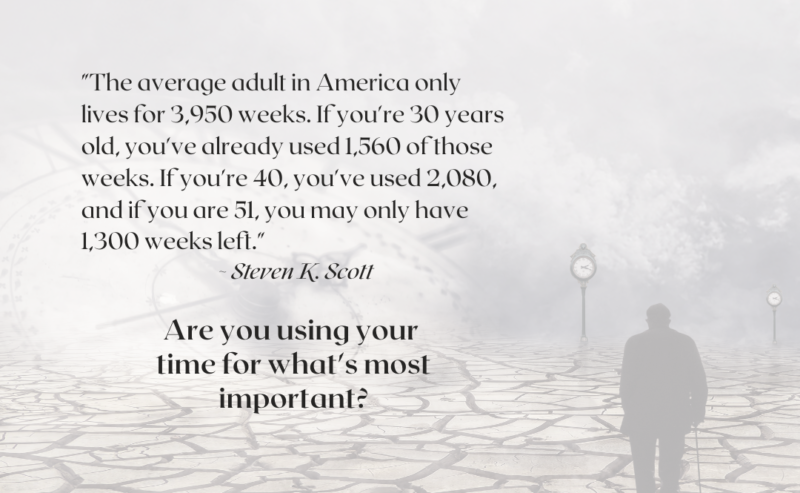Blog Short #134: 6 Messages You Broadcast that Keep You From Getting What You Want

Photo by Brooke Cagle on Unsplash
You broadcast messages daily that give people information about who you are and what you want – or don’t want.
Most of these messages are given and received subconsciously, but they influence how people experience you and how your life unfolds.
You can’t be aware of all the information stashed away in your subconscious and unconscious mind. It would be impossible to hold all of that in awareness at once. Still, you can figure out the primary messages you send based on your experiences – especially repetitive ones.
It helps to go through this process when you’re feeling stuck or have repeated experiences you don’t want to have, or are not getting what you want despite your many attempts to do so.
Examples might be:
- Wishing to be in a relationship but consistently striking out
- Attracting the same type of toxic person over and over
- Going from one job to another and being disappointed every time
- Making friends but being unable to hold on to them
- Or you generally find yourself in the same unwanted situation again and again
You may feel that you’ve tried everything possible to change these patterns with no success.
So what gives? If you’ve tried what you can, what else can you do other than suffer more?
The answer’s not out there; it’s in here. Inside of you. What are you broadcasting from the inside that creates the same old disappointing experiences?
This isn’t about blame. It’s about stretching your awareness to see if there are subconscious messages you may be sending out unknowingly that conflict with your aspirations and desires.
Here are six messages you may be broadcasting that interfere with getting what you want.
1. You can take advantage of me.
You wouldn’t broadcast a message like that knowingly, but you can easily send it based on your behavior. Behaviors might include things like:
- Doing things to please others, even when at your expense
- Letting your need to be liked override being exploited or abused
- Repeatedly rescuing people without holding them accountable
- Saying yes to everything, even when you don’t want to
- Taking on responsibilities that aren’t yours
All these behaviors let people know they can take advantage of you, even if they do it unknowingly or not on purpose. You encourage it without meaning to and then feel resentful when it occurs. It happens automatically.
2. Rescue me!
The desire to be rescued may not be in your conscious awareness, but it comes through loud and clear when it’s there.
What people feel coming from you is a sense of desperation. You might come off as confident, especially at first, but the underground feelings of loneliness and neediness come through over time.
Despite what you say or how you act, helplessness pervades the emotional air around you, and people drop off.
The need to be rescued can co-exist with being taken advantage of because, in your quest to get the love and attention you need, you sacrifice yourself, hoping it will bring someone in (or keep them there).
3. I’m not worthy.
Feeling unworthy can come through in many ways. Sometimes it’s obvious and shows up in how you talk about yourself and through your body language.
You can also transmit it through self-deprecating behaviors.
A less obvious one is a lack of self-care and self-discipline.
Someone who feels unworthy might not take care of themselves; they let their body go, ignore health issues, finances are in shambles, live in clutter, do sloppy work on the job, forget things, etc.
That doesn’t mean that these behaviors all represent feelings of unworthiness. You can be forgetful, for example, yet function highly in general.
I’m talking about an overall pattern of letting yourself go, which translates to “I’m not worthy enough to care for.” People will automatically reflect that feeling back to you, even when unaware. Or it can trigger the same feeling in someone else, and they avoid you to avoid feeling it in themselves.
4. I need attention.
In this instance, your behavior is aimed at getting attention, sometimes at the expense of others. You might seem dramatic, entitled, self-centered, or just loud. You might turn most conversations back to you. Or you compete with or one-up others and don’t recognize their discomfort or disapproval of your behavior.
Attention seekers can be engaging initially, but the interest wears off quickly, and people scatter as they realize it’s a one-way street.
5. I need to be in control.
There’s a fine dividing line between being competent and needing control. You’re likely attractive when you present as someone who’s confident, able to manage things, and intelligent. However, if those qualities are tinged with militarism and a need to be in charge no matter what, you’ll push away people because you lack the ability to collaborate and be open-minded to the wishes and needs of others.
Dominance is not an attractive quality, and where you might initially attract someone with your competence, they move away when they uncover the need to control underneath it.
6. I can’t be trusted.
People may not learn this about you right away, but it comes through over time. It may be subtle, like not following through on what you say or fudging things ever so slightly to avoid being in trouble.
It may show up in a big way, like cheating, omitting significant information, or lying outright about things that will be offensive when uncovered. Or it might manifest through repeated manipulation or personal attacks that seem unwarranted.
Trustworthiness is a character trait, and if it’s not there or is consistently challenged, people sense it even before you act it out. It’s as though you’re wearing a “keep out” sign on your back to everyone except those who are either like you or have repeatedly been victimized and can’t break the pattern.
Even an unwitting lack of dependability or reliability can send the message, “I can’t be trusted.”
What to Do
If you have repeated experiences that aren’t satisfying or cannot engage in relationships that are good for you and meet your expectations, try going through this list and ask yourself if any of these messages apply. Take your time and give it some deep thought. It’s easy to defend even while trying to sift through the possibilities, but keep at it until you’re satisfied with your progress.
If you can pinpoint messages you broadcast that keep you from what you want, you can change them to more attractive and healthier ones.
It may require changing your self-talk and behavior as well. It takes work, but it’s work that’s worth the time.
Get some help if you can’t do it yourself. We’re most blinded by ourselves. It’s easy to see patterns like this in others, but we have difficulty turning inward. If you have someone who knows you well that you trust, you can run the list by them and ask if they see these patterns in you.
Keep this in mind.
The messages you broadcast have significant power over how your life goes. You can’t control everything that happens, but you can control what you put out there.
However you decide to approach it, know that working on yourself and becoming self-aware is the quickest and best route to change the outer circumstances of your life, especially your relationships.
That’s all for today.
Have a great week!
All my best,
Barbara







 Although that’s normal for toddlers because emotional discharge is part of their developmental phase, and they don’t have the cognition to be self-aware, it’s not okay for adults!
Although that’s normal for toddlers because emotional discharge is part of their developmental phase, and they don’t have the cognition to be self-aware, it’s not okay for adults!
